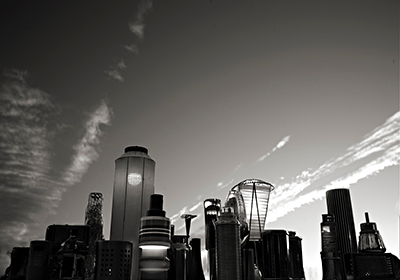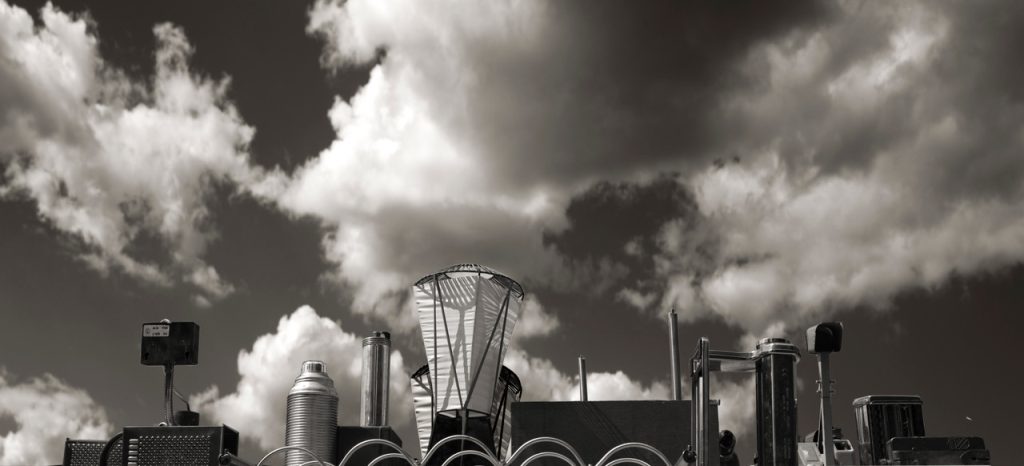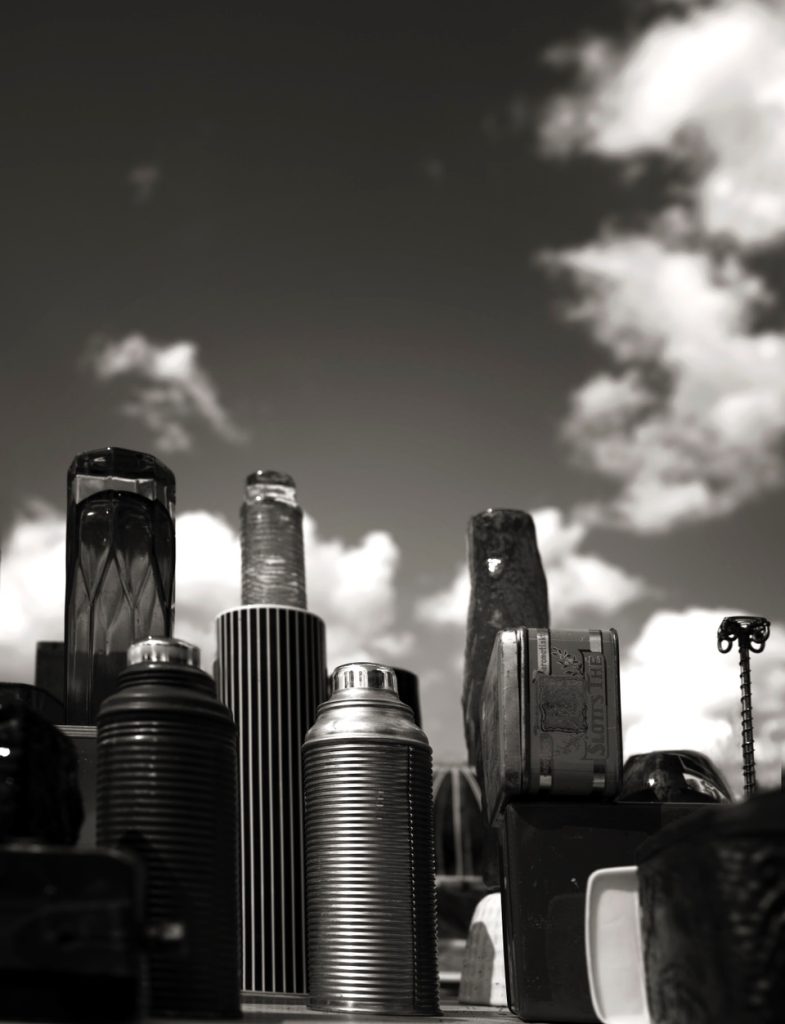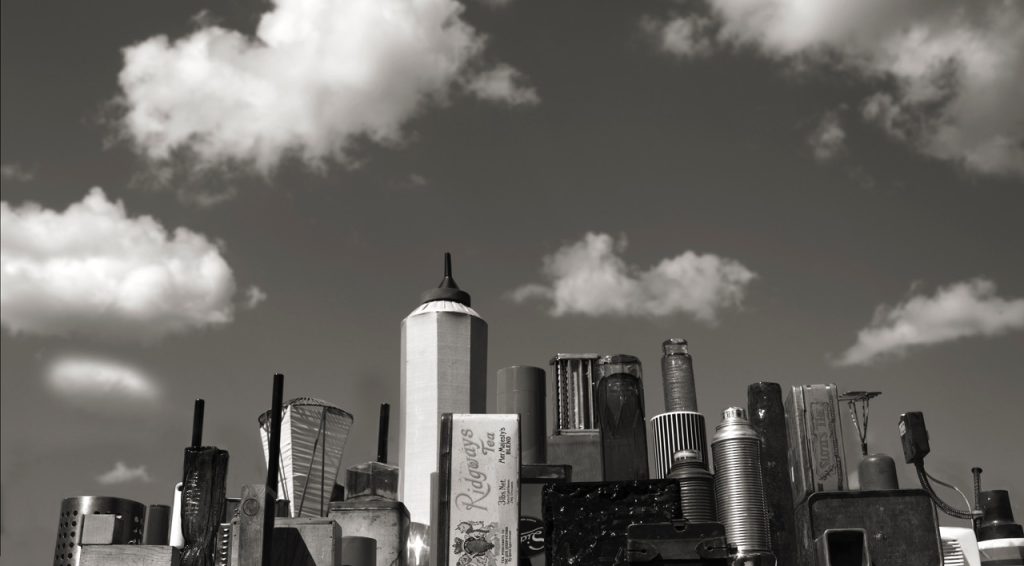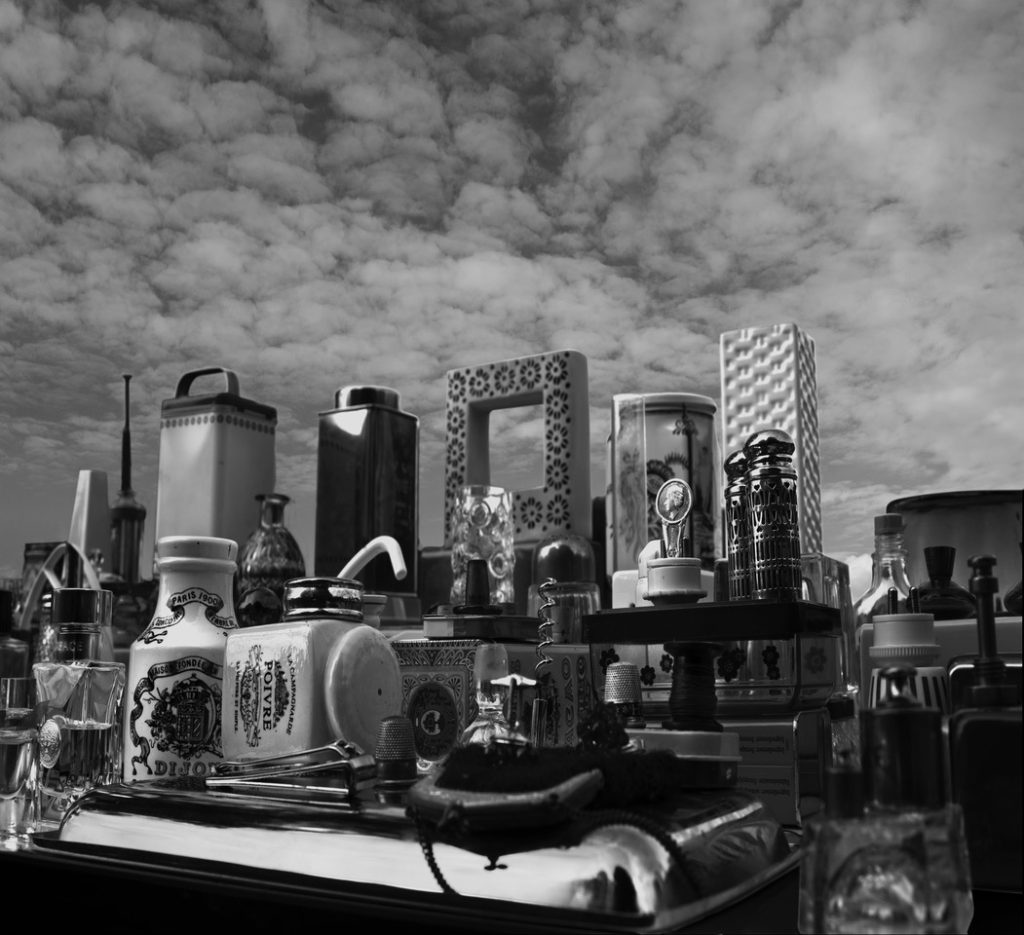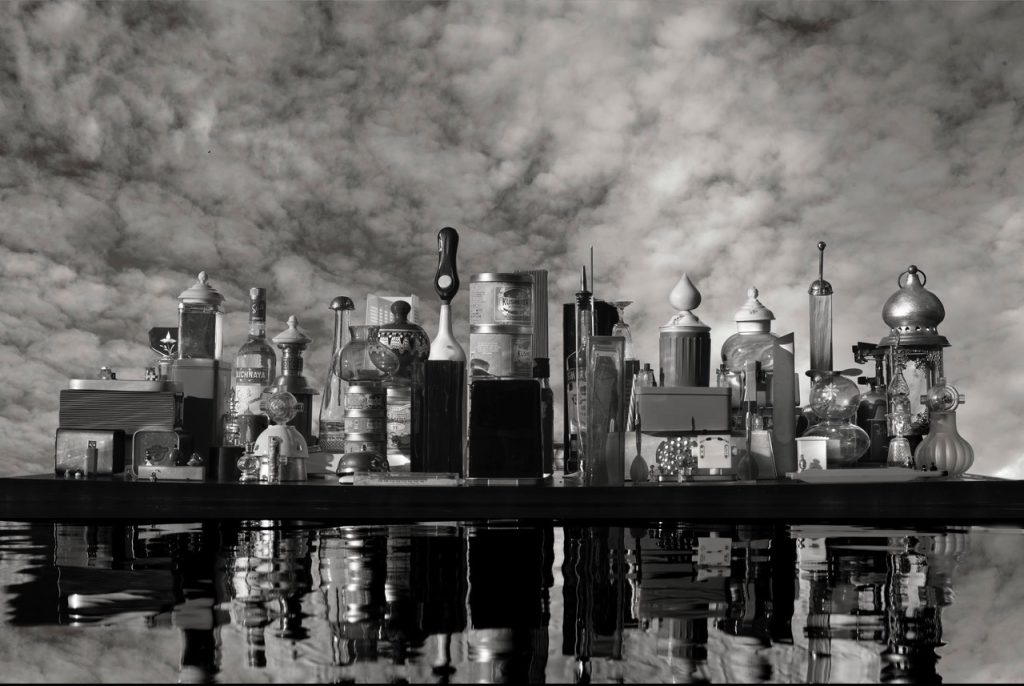In her most recent series, Maria Friberg takes us into a staged world that contains real features. At first the mise-en-scène holds our gaze, then directs it towards the astute transformation of objects into imaginary architectures.
Inspired by urban landscapes, Friberg captures cities in a variety of surrealistic abstractions that elude time and space. Each work represents an atmospheric vision of modernist architecture, depicting cityscapes crafted from everyday objects, imitating New York, Miami, Detroit, and San Francisco’s Chinatown. The skylines Friberg creates, imply urban dystopias as they suggest lifeless thoroughfares, empty interiors, and lonely streets. The pandemic also drew a black and white veil over our world, depriving life of colour. The sight of the empty city not only evokes memories of the isolation and alienation caused by the confinement, but also awakens memories of the dreams one once had – most of which are now realizable again.
The aesthetic appeal opens the conversation with the work. With the first glance, it becomes clear that the images have a serious undertone. The fast pace of urban society was paralyzed, humanity was forced to stay at home, imposed by a force majeure. The freedom of choice is taken away and it is hope that remains – hope for a better life, without restrictions, limitations, or fear for one’s own existence. Friberg depicts the shattered dreams of societies whose lives have been abruptly changed by a worldwide pandemic. These streets were once filled with life, where now only a lonely wind blows, leaving emptiness behind.
Maria Friberg addresses sensitive issues in a way that is not intimidating, but instead allows for deep reflection, reminding us to reconnect to profound appreciation and awareness for freedom of movement as well as our surroundings.
